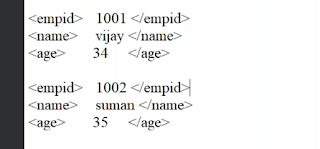Mastering Hierarchical Data Display with REUSE_ALV_HIERSEQ_LIST_DISPLAY in ABAP
REUSE_ALV_HIERSEQ_LIST_DISPLAY :-
REUSE_ALV_HIERSEQ_LIST_DISPLAY is a function module in ABAP used to display hierarchical sequential lists in ALV (ABAP List Viewer). Here are some key points about it:
- Hierarchical Sequential List: This function module is particularly useful when you need to display data that has a hierarchical structure, such as organizational charts, bill of materials, or product categories.
- ALV Integration: ALV provides a powerful tool for displaying data in tabular format with various functionalities like sorting, filtering, and subtotaling.
REUSE_ALV_HIERSEQ_LIST_DISPLAYextends this capability to hierarchical data structures. - Parameters: The function module takes various parameters to define the structure of the ALV output. Parameters include field catalog, layout structure, and hierarchical sequential table.
- Field Catalog: The field catalog defines the structure of the ALV output, including the columns to be displayed and their properties such as headers, widths, and visibility.
- Layout Structure: The layout structure specifies additional settings for the ALV display, such as default sorting, subtotaling, and grouping options.
- Hierarchical Sequential Table: This is the main input parameter containing the hierarchical data to be displayed. It typically consists of parent-child relationships, with each record representing a node in the hierarchy.
- Event Handling: The function module provides event handling mechanisms to customize the behavior of the ALV display. Events include node expand/collapse, double-click, and context menu actions.
- Enhancement Options:
REUSE_ALV_HIERSEQ_LIST_DISPLAYoffers various enhancement options to customize the appearance and functionality of the ALV output. These include adding custom toolbar buttons, context menu entries, and additional data fields. - Performance Considerations: Displaying large hierarchical datasets can impact performance, especially if extensive calculations or database operations are involved. Proper indexing and data retrieval strategies should be employed to optimize performance.
- Compatibility: While
REUSE_ALV_HIERSEQ_LIST_DISPLAYis a powerful tool for displaying hierarchical data, it's essential to ensure compatibility with the target SAP system and the specific ALV version being used. Compatibility issues may arise when migrating between different SAP releases or when integrating with custom ALV frameworks.
Understanding these points can help developers effectively utilize REUSE_ALV_HIERSEQ_LIST_DISPLAY to present hierarchical data in an intuitive and user-friendly manner within ABAP applications.
Let’s take a requirement to develop a report using above function module.
Requirement :-
- In the above diagram we are displaying using the above function module.
- We have 5 fields from VBAK table and 5 fields from VBAP table
- From VBAK we will be taking VBELN, ERDAT, ERZET, ERNAM, VBTYP.
- From VBAP we will be taking VBELN POSNR MATNR.
Solution :-
-
Step 1 :- Create a executable program in ABAP Editor.
-
Step 2 :- Declare type structure for both the header and item tables.
-
Step 3 :- declare internal table and work area for the both the type structures.
-
Step 4 :- declare a select option to take input from selection screen.
-
Step 5 :- Write select queries to fetch data from both the tables.
-
Step 6 :- write down the field catalog for the tables.
-
Step 7 :- Call the function module ‘REUSE_ALV_HIERSEQ_LIST_DISPLAY’.
Code :-
*&----------------------------------------------------------------
*&Start of Program
*&---------------------------------------------------------------
TYPES: BEGIN OF ty_vbak,
vbeln TYPE vbeln_va,
erdat TYPE erdat,
erzet TYPE erzet,
ernam TYPE ernam,
vbtyp TYPE vbtypl,
END OF ty_vbak.
TYPES: BEGIN OF ty_vbap,
vbeln TYPE vbeln_va,
posnr TYPE posnr_va,
matnr TYPE matnr,
END OF ty_vbap.
DATA : lt_vbak TYPE TABLE OF ty_vbak,
ls_vbak TYPE ty_vbak,
lt_vbap TYPE TABLE OF ty_vbap,
ls_vbap TYPE ty_vbap.
DATA : lt_fieldcat TYPE TABLE OF slis_fieldcat_alv,
ls_fieldcat TYPE slis_fieldcat_alv,
ls_key type slis_keyinfo_alv.
DATA : lv_vbeln TYPE vbeln_va.
SELECT-OPTIONS : s_vbeln FOR lv_vbeln.
START-OF-SELECTION.
SELECT vbeln erdat erzet ernam vbtyp
FROM vbak
INTO TABLE lt_vbak
WHERE vbeln IN s_vbeln.
IF lt_vbak IS NOT INITIAL.
SELECT vbeln posnr matnr
FROM vbap
INTO TABLE lt_vbap
FOR ALL ENTRIES IN lt_vbak
WHERE vbeln = lt_vbak-vbeln.
ls_fieldcat-seltext_l = 'Sales Document Number'.
ls_fieldcat-fieldname = 'VBELN'.
ls_fieldcat-tabname = 'LT_VBAK'.
APPEND ls_fieldcat TO lt_fieldcat.
CLEAR ls_fieldcat.
ls_fieldcat-seltext_l = 'Creation Date'.
ls_fieldcat-fieldname = 'ERDAT'.
ls_fieldcat-tabname = 'LT_VBAK'.
APPEND ls_fieldcat TO lt_fieldcat.
CLEAR ls_fieldcat.
ls_fieldcat-seltext_l = 'Created On'.
ls_fieldcat-fieldname = 'ERZET'.
ls_fieldcat-tabname = 'LT_VBAK'.
APPEND ls_fieldcat TO lt_fieldcat.
CLEAR ls_fieldcat.
ls_fieldcat-seltext_l = 'Created By'.
ls_fieldcat-fieldname = 'ERNAM'.
ls_fieldcat-tabname = 'LT_VBAK'.
APPEND ls_fieldcat TO lt_fieldcat.
CLEAR ls_fieldcat.
ls_fieldcat-seltext_l = 'Document Category'.
ls_fieldcat-fieldname = 'VBTYP'.
ls_fieldcat-tabname = 'LT_VBAK'.
APPEND ls_fieldcat TO lt_fieldcat.
CLEAR ls_fieldcat.
ls_fieldcat-seltext_l = 'Sales Document Number'.
ls_fieldcat-fieldname = 'VBELN'.
ls_fieldcat-tabname = 'LT_VBAP'.
APPEND ls_fieldcat TO lt_fieldcat.
CLEAR ls_fieldcat.
ls_fieldcat-seltext_l = 'Item Number'.
ls_fieldcat-fieldname = 'POSNR'.
ls_fieldcat-tabname = 'LT_VBAP'.
APPEND ls_fieldcat TO lt_fieldcat.
CLEAR ls_fieldcat.
ls_fieldcat-seltext_l = 'Material Number'.
ls_fieldcat-fieldname = 'MATNR'.
ls_fieldcat-tabname = 'LT_VBAP'.
APPEND ls_fieldcat TO lt_fieldcat.
CLEAR ls_fieldcat.
ls_key-header01 = 'VBELN'.
ls_key-item01 = 'VBELN'.
CALL FUNCTION 'REUSE_ALV_HIERSEQ_LIST_DISPLAY'
EXPORTING
IT_FIELDCAT = lt_fieldcat
i_tabname_header = 'LT_VBAK'
i_tabname_item = 'LT_VBAP'
is_keyinfo = ls_key
TABLES
t_outtab_header = lt_vbak
t_outtab_item = lt_vbap
EXCEPTIONS
PROGRAM_ERROR = 1
OTHERS = 2
.
*&----------------------------------------------------------------------
*&End of Program
*&-----------------------------------------------------------------------
ENDIF.








.png)
.png)

Comments
Post a Comment